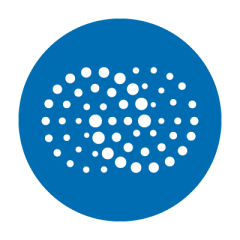What is our primary use case?
Catchpoint is used for synthetic monitoring. For example, if you have a URL, you may want to ensure that your customer's journey is monitored from a user-experience standpoint.
In Catchpoint, you can enter the user action, and that user action can then be configured as a script. Catchpoint will then continue to emulate that user's steps every 5 minutes or 10 minutes, as it is defined by you.
If you have a service product and have just exposed the API in your data. In those cases, you can perform API monitoring by passing sample data contracts and validating whether your API is responding to the query or not. It can also tell you what the time is, what the response score is, and so on.
What is most valuable?
That is the function of features. The most valuable features of Catchpoint are basically the transaction monitors on the API and UI.
What needs improvement?
Because these transaction monitors also monitor your product's entry-point URLs, there are numerous things it can do to improve. Assume you have a SaaS for a company, and they want to add a status page as a feature. When a company decides to set up monitors for their entry-point URLs, that status page can be exposed to customers as well.
Catchpoint can display downtime as the status whenever it detects it. And can be used by the company to demonstrate to their customers that there is a downtime occurring and that we are working on it, from the standpoint of customer communication.
That is the other issue, in that their API is extensive but also a lot. There are essentially a lot of quotas. Nobody wants to sit and manually create monitors for someone who uses synthetic monitoring.
With the direction of the industry, many people want to work in automation. Creating monitors as automation is an important aspect of their growth, which I did not see when I used it because they did not have an API for which you could actually create monitors.
For how long have I used the solution?
I have been working with Catchpoint for approximately five or six years.
As Catchpoint is a SaaS provider, we would be working with the latest version.
Catchpoint is a SaaS product that serves as a central monitoring tool. Catchpoint provides virtual agents, but you can also have your own nodes in your environment.
In my experience, we have used a combination of the two. The nodes were set up on AWS in the cloud to monitor the health of internal URLs. Then, for the public, for example, for region-specific monitoring, we wanted to use a German monitor. Then, using Catchpoint, publish your virtual monitors and agents.
Buyer's Guide
Catchpoint
May 2025
Learn what your peers think about Catchpoint. Get advice and tips from experienced pros sharing their opinions. Updated: May 2025.
850,671 professionals have used our research since 2012.
What do I think about the stability of the solution?
Catchpoint is a very stable solution.
What do I think about the scalability of the solution?
Scalability, I believe, is a perspective. From a scalability standpoint, it is good at times and bad at others, in my opinion. Assuming I have a single node, I'll show an example of Catchpoint hosted in my own environment.
If I host a Catchpoint node on my own and that node fails for whatever reason, there is no way for me to create nodes in a cluster so that if one node fails, the monitor picks up the other node and so on. On the UI, that is a manual configuration. I need to make a node group or something similar by grouping three nodes together.
If the load on a single node is high, Catchpoint does not distribute the load across the node group that was created. If they can handle it, it will be very, very good for scalability. Otherwise, their public nodes, such as the virtual agents that they provide, are sufficiently scalable. They can handle them on their own. The only issue with scalability arises when you deploy your own node in your environment.
It's our team, the observability team, which consists of about 5 to 10 people. We are in charge of setting up the transaction monitors.
Everyone who owns the product. They are used by product teams. Overall, in the company, there are approximately 5,000 users.
How are customer service and support?
Technical support is good. They also provide professional services, which are good.
How was the initial setup?
It is fairly easy to set up.
We had it up and running in a day.
What's my experience with pricing, setup cost, and licensing?
In terms of licensing fees, I believe they were slightly higher. I believe their primary market is large enterprises, but from a licensing cost standpoint, I believe there are other tools available that provide the same functionality at a lower cost, such as Pingdom and others.
There are numerous sites available 24 hours a day, seven days a week. There are numerous other synthetic monitoring tools that compete with Catchpoint. However, I believe Catchpoint positions itself as a tool for large enterprises with money to spend, which is why they are expensive.
What other advice do I have?
I would advise them to use this product if they can afford it.
I would rate Catchpoint an eight out of ten.
They only lose two points for the cost; otherwise, the insights they provide are really good. There are not many competitive tools that don't provide them.
Which deployment model are you using for this solution?
Public Cloud
If public cloud, private cloud, or hybrid cloud, which cloud provider do you use?
Amazon Web Services (AWS)
Disclosure: I am a real user, and this review is based on my own experience and opinions.



















I can say that I have been using Anturis to monitor the application performance as this very tool is compatibale a lot with the apps i am using.As for Pingdom, I don't think that they offer ggood support to their numerous customers.